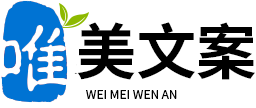英语作文
Title: A Guide to Optimizing Web Content for Better Search Engine Visibility
Introduction: In today's digital age, having a strong online presence is essential for businesses and individuals alike. One effective way to improve visibility and attract more visitors to a website is through search engine optimization (SEO). By following certain guidelines, website owners can maximize their chances of ranking higher on search engine results pages (SERPs). In this article, we will discuss some key strategies for optimizing web content to enhance search engine visibility.
Keyword Research: Effective SEO starts with thorough keyword research. By identifying relevant keywords and phrases that users are likely to search for, website owners can tailor their content to match these search queries. Keyword research tools, such as Google Keyword Planner and SEMrush, can help in finding high-ranking and low-competition keywords. Incorporating these keywords naturally throughout the content will increase the chances of ranking higher on SERPs.
Quality Content Creation: Creating high-quality and engaging content is crucial for SEO. Search engines prioritize websites that provide valuable and informative content to users. By offering unique and original content, website owners can increase the likelihood of attracting more visitors, encouraging them to spend more time on the website, and potentially converting them into customers. It is important to ensure that the content is well-structured, easy to read, and relevant to the target audience.
Meta Tags and Descriptions: Meta tags and descriptions provide search engines with a brief summary of the webpage's content. Including relevant keywords in these meta tags and descriptions can help search engines understand the context of the webpage better. This, in turn, can improve the website's visibility on SERPs. It is essential to write compelling and concise meta tags and descriptions that accurately reflect the webpage's content while enticing users to click on the link.
Optimizing Images and Multimedia: Optimizing images and multimedia on a website can also contribute to better search engine visibility. Using descriptive file names and alt tags that include relevant keywords can help search engines understand the content of the visuals. Additionally, optimizing the file size and format of images can improve website loading speed, which is another important factor for SEO.
Mobile-Friendliness: With the increasing use of mobile devices, having a mobile-friendly website is crucial for SEO. Search engines prioritize mobile-friendly websites in their rankings, as they provide a better user experience on mobile devices. It is important to ensure that the website is responsive, with easy navigation and readable content on smaller screens. Testing the website's mobile-friendliness using tools like Google's Mobile-Friendly Test can help identify areas for improvement.
Conclusion: Optimizing web content for search engines is an ongoing process that requires continuous effort and adaptation. By following the strategies discussed in this article, website owners can improve their search engine visibility and attract more organic traffic. Remember to focus on providing valuable and relevant content, incorporating keywords naturally, optimizing meta tags and descriptions, and ensuring mobile-friendliness. With these techniques, website owners can increase their chances of ranking higher on SERPs and reaching their target audience effectively.
